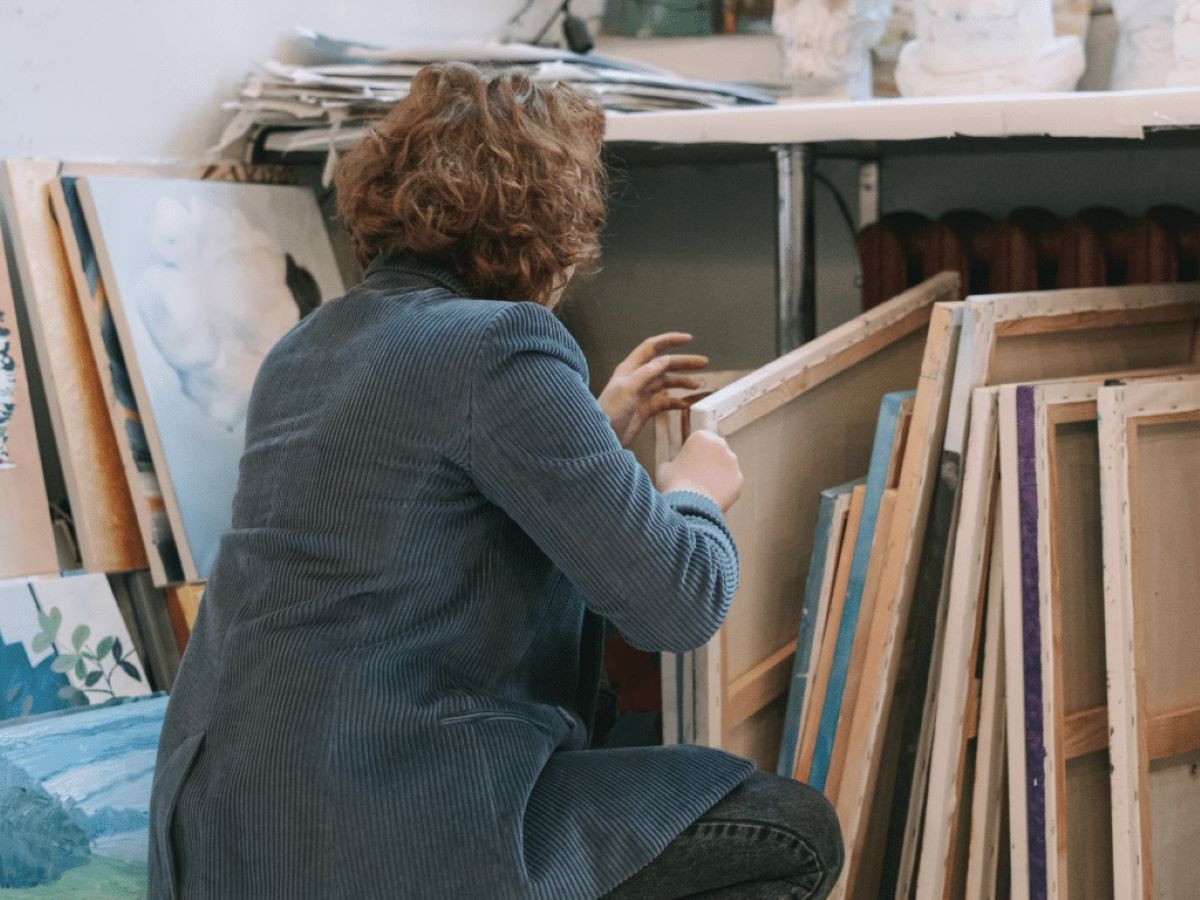

Articles
How To Store Paintings
Modified: January 5, 2024
Discover the best articles on how to properly store and preserve your valuable paintings to ensure their longevity and beauty. Essential tips and techniques for art collectors and enthusiasts.
(Many of the links in this article redirect to a specific reviewed product. Your purchase of these products through affiliate links helps to generate commission for Storables.com, at no extra cost. Learn more)
Introduction
Storing paintings properly is crucial in preserving their beauty and ensuring their longevity. Whether you’re an art collector or an artist looking to protect your own creations, following the right storage techniques is essential. Paintings are delicate and susceptible to damage from various factors such as light, dust, temperature fluctuations, and moisture. In this article, we will provide you with comprehensive guidelines on how to store paintings to keep them in optimal condition.
Properly storing paintings involves careful preparation, selecting the right storage area, framing and matting, proper wrapping techniques, and maintaining appropriate temperature and humidity levels. Additionally, ensuring protection against light and dust, regular inspection, and maintenance are crucial steps in preserving the integrity of the artwork. Let’s delve into each of these aspects in detail to ensure your paintings remain in pristine condition throughout their storage.
Key Takeaways:
- Preserve your paintings by preparing them properly, choosing the right storage area, and maintaining stable temperature and humidity levels. Protect against light, dust, and pests through careful wrapping and regular inspection.
- Ensure the longevity of your paintings by following framing and matting techniques, proper wrapping methods, and careful storage either flat or vertically. Regularly monitor and maintain temperature, humidity, and protection from light and dust.
Read more: How To Store Painting
Proper Preparation
Before storing your paintings, it is important to prepare them properly to minimize the risk of damage. Start by cleaning the surface of the painting using a soft, lint-free cloth or a professional cleaning solution specifically designed for artwork. Be cautious not to apply excessive pressure or use abrasive materials, as this can lead to scratches or color loss.
Next, inspect the painting for any signs of damage, such as flaking paint or loose canvases. If you notice any issues, it is advisable to consult a professional art restorer before storing the artwork. They will be able to address the problem and ensure the painting is stable enough for storage.
Additionally, consider taking photographs of the artwork before storing. These photographs can serve as documentation and a visual reference for future reference or insurance claims. Ensure that the photographs capture the details, texture, and color accuracy of the painting.
Finally, handle the artwork with clean hands or wear white cotton gloves when touching the painting. Oils and dirt from your hands can transfer onto the painting and potentially damage its surface. By taking these preparatory steps, you will create a solid foundation for the storage process.
Choosing the Right Storage Area
Selecting the proper storage area for your paintings is crucial to maintain their condition during long-term storage. Here are some important considerations:
Temperature and Humidity: Choose a storage space with stable temperature and humidity levels. Ideally, the temperature should be around 68-72 degrees Fahrenheit (20-22 degrees Celsius). The relative humidity should be maintained at around 40-50%. Fluctuations in temperature and humidity can lead to expansion and contraction of the paint and canvas, causing long-term damage to the artwork.
Light Protection: Avoid exposing your paintings to direct sunlight or strong artificial light. Ultraviolet (UV) rays can cause fading, discoloration, and deterioration of the paint. If possible, store the paintings in a dark area or use curtains or blinds to block out sunlight.
Security: Ensure that the storage area is secure and protected from potential theft or damage. Consider installing an alarm system or surveillance cameras, and keep the area well-locked. If you are storing valuable or irreplaceable paintings, you may want to consider a professional storage facility with enhanced security measures.
Avoid Environmental Hazards: Keep the paintings away from areas with high humidity, such as basements or attics, as these conditions can promote mold or mildew growth. Additionally, avoid storing paintings near sources of heat, such as radiators or air conditioning units, as extreme temperatures can cause damage to the artwork.
Ventilation: Adequate air circulation is important to prevent the build-up of moisture and ensure a stable environment. If the storage area lacks natural ventilation, consider using dehumidifiers or air purifiers to maintain proper air quality.
By carefully choosing the right storage area, you can create a controlled environment that minimizes the risk of damage to your paintings. This will help preserve their quality and longevity over time.
Framing and Matting
Proper framing and matting not only enhance the aesthetic appeal of your paintings but also provide an extra layer of protection during storage. Here are some tips to consider when framing and matting your artwork:
Use Acid-Free Materials: When choosing frames, mats, and backing boards, make sure to use acid-free, archival-quality materials. Acidic materials can cause discoloration, deterioration, and the formation of stains on the artwork over time.
Frame with UV-Protective Glass or Acrylic: Opt for frames with UV-protective glass or acrylic to block harmful ultraviolet (UV) rays. UV rays can fade and damage the paint pigments, leading to color distortion and loss of vibrancy.
Consider Spacer Bars: Spacer bars can be used to create a gap between the surface of the painting and the glass/acrylic. This helps prevent moisture accumulation and allows for air circulation, reducing the risk of mold or mildew growth.
Use Proper Mounting Techniques: Ensure that the artwork is properly mounted within the frame to prevent it from shifting or sagging. Avoid using materials that can cause irreversible damage, such as tape or glue. Instead, consider using archival mounting techniques, such as acid-free corners, hinging, or straps.
Allow Space for Expansion: Leave a small gap between the artwork and the mat when mounting it. This allows for expansion and contraction of the painting materials due to changes in temperature and humidity.
Consider Double Matting: Double matting, with a small gap between the mats, provides additional protection and creates a visually appealing presentation. This can also help prevent the artwork from directly touching the glass/acrylic.
Properly Seal the Backing: Once the artwork is mounted and framed, ensure that the backing is properly sealed to prevent the entry of dust, moisture, or pests. Consider using acid-free, archival-quality backing boards and seal with acid-free tape or framing sealant.
By following these framing and matting techniques, you can safeguard your paintings from potential damage and ensure their longevity. Always consult a professional framer if you are unsure about the best framing options for your specific artwork.
Wrapping Techniques
Properly wrapping your paintings is essential to protect them from dust, moisture, and physical damage during storage. Here are some recommended wrapping techniques:
Use Acid-Free Glassine Paper: Before wrapping the paintings, it is advisable to place a layer of acid-free glassine paper directly on the surface of the artwork. This thin, translucent paper provides a barrier against moisture and prevents sticking or smudging of the paint.
Avoid Plastic Wrap: While plastic wrap may seem like a convenient option, it is not recommended for long-term storage of paintings. Plastic can trap moisture and create a humid environment, leading to the growth of mold or mildew. It can also cause condensation if there are temperature fluctuations.
Protective Layers: After placing the glassine paper, consider layering the paintings with archival-quality tissue paper or acid-free foam boards. These layers provide additional cushioning and protection against external pressure or accidental impacts.
Secure the Wrapping: Once the paintings are wrapped with glassine paper and protective layers, secure everything in place using acid-free artist tape or polyester straps. Avoid using materials that can damage the artwork or leave residue over time.
Labeling: It is important to label each wrapped painting with relevant information, such as the artist’s name, title of the artwork, date, and any special handling instructions. This will help you identify each painting without having to unwrap them all.
Store Flat or Upright: Depending on the size and type of the painting, determine whether it should be stored flat or upright. Smaller paintings or canvases without heavy impasto can be stored flat, while larger or heavily textured artworks should be stored vertically to prevent any distortion or damage to the surface.
Protective Outer Cover: Finally, place the wrapped and secured paintings in a sturdy, acid-free cardboard box or a specialized art storage container. This outer cover acts as an extra layer of protection against dust, light, and potential impacts.
By following these wrapping techniques, you can ensure that your paintings are adequately protected during storage. Remember to handle the wrapped artworks with care to avoid any accidental damage while moving or storing them.
Read more: How To Store A Painting
Storing Paintings Flat
Storing paintings flat is a common and preferred method, especially for smaller or less textured artworks. Here are some guidelines to follow when storing paintings flat:
Choose a Stable Surface: Select a flat, sturdy surface for storing the paintings, such as a clean and dry storage rack, a specialized art storage drawer, or a flat shelf. Avoid using surfaces that are prone to moisture or instability, as this can lead to warping or damage to the artwork.
Use Acid-Free Interleaving: Place acid-free interleaving sheets or archival-quality cardboard between each painting to prevent them from sticking together or transferring any residual moisture or particles. These sheets also provide a cushioning effect and help maintain an even surface.
Size-Based Organization: Organize the paintings by size, with the largest ones at the bottom and the smaller ones on top. This helps distribute the weight evenly and prevents any potential pressure or damage to the artworks beneath.
Avoid Overlapping: Ensure that the paintings do not overlap or come into direct contact with each other. Even slight pressure or friction between artworks can lead to scratches or color transfer. Leave a small gap between each painting to maintain their individual integrity.
Rotate the Artworks: Regularly rotate the position of the paintings to prevent any long-term pressure on certain areas. This helps distribute the weight evenly and minimizes the risk of sagging or warping over time.
Monitor Temperature and Humidity Levels: Continuously monitor and maintain suitable temperature and humidity levels in the storage area to avoid any fluctuations that could impact the quality of the artwork. A stable environment is crucial for preserving the integrity of paintings stored flat.
Regular Inspection: Periodically inspect the stored paintings for any signs of damage, insects, or mold/mildew growth. Early detection and intervention can prevent further deterioration and ensure timely restoration if needed.
Handling and Moving: When handling or moving the stored paintings, exercise caution to avoid any accidental bumps, impacts, or excessive pressure. Always make use of clean, dry hands or wear white cotton gloves to prevent oils or dirt from transferring onto the paintings.
By following these guidelines for storing paintings flat, you can minimize the risk of damage and maintain the artwork’s condition for an extended period of time.
When storing paintings, make sure to keep them in a cool, dry place away from direct sunlight and extreme temperatures. Use acid-free materials for wrapping and padding to protect the surface of the painting.
Storing Paintings Vertically
Storing paintings vertically is a suitable method for larger or heavily textured artworks. Here are some important considerations when storing paintings in a vertical position:
Secure Vertical Storage Racks: Invest in stable and secure vertical storage racks specifically designed for storing paintings upright. These racks should have adjustable supports to accommodate different sizes and thicknesses of artworks.
Positioning and Spacing: Place the paintings vertically, ensuring that they are straight and aligned. Leave enough space between each painting to prevent any accidental contact or potential damage.
Backing Support: To provide additional support and stability, attach foam pads or soft cushions to the back of each painting where it rests against the storage rack. This helps distribute the weight evenly and minimizes strain on the canvas or frame.
Weight Distribution: If you have multiple paintings stored vertically, consider positioning the larger or heavier artworks towards the bottom of the rack. This helps maintain balance and prevents any undue pressure on the lower paintings.
Secure the Paintings: To prevent any movement or shifting, strap or secure the paintings to the vertical storage rack using adjustable bands or Velcro straps. This ensures that the artworks remain in place and minimizes the risk of accidental damage.
Monitor Environmental Conditions: Just like with storing paintings flat, it is important to monitor and maintain appropriate temperature and humidity levels in the storage area. Consistency in these conditions helps preserve the integrity of the artwork.
Light Protection: Ensure that the storage area is away from direct sunlight or strong artificial light sources. Ultraviolet rays can cause fading and deterioration of the paint over time.
Regular Inspection: Regularly inspect the stored paintings for any signs of damage, such as loose frames, flaking paint, or insect infestation. Prompt action can prevent further deterioration and ensure timely restoration if required.
Handling Precautions: When removing or repositioning vertically stored paintings, exercise caution to avoid any accidental bumps or impacts. Use clean, dry hands or wear white cotton gloves to prevent oils or dirt from transferring onto the artwork.
Storing paintings vertically can help preserve the integrity of larger or heavily textured artworks while optimizing storage space. By following these guidelines, you can ensure the longevity and protection of your vertically stored paintings.
Maintaining Temperature and Humidity Levels
Maintaining proper temperature and humidity levels is crucial for the long-term preservation of stored paintings. Here are some important considerations to help you maintain an optimal environment:
Temperature Control: Aim to maintain a stable temperature for the storage area, ideally between 68-72 degrees Fahrenheit (20-22 degrees Celsius). Sudden fluctuations in temperature can cause the paint and canvas to expand and contract, leading to potential cracking or warping of the artwork.
Humidity Regulation: Relative humidity (RH) is equally important. Aim for a relative humidity level of around 40-50%. High humidity can encourage mold growth, while low humidity can cause the artwork to become brittle and prone to cracking. Use a hygrometer to monitor and adjust humidity levels if necessary.
Dealing with Moisture: Moisture is a significant threat to stored paintings, so it’s essential to keep the storage area dry. Avoid placing paintings near areas with excessive moisture, such as basements or areas with frequent water leaks. Consider using dehumidifiers or moisture-absorbing products in the storage area to combat high humidity.
Preventing Dryness: On the other hand, extremely dry conditions can cause the paint to become brittle and crack. In arid climates, using a humidifier or placing water containers strategically in the storage area can help maintain a moderate level of humidity.
Avoid Condensation: Condensation can occur when there are extreme temperature differences between the stored paintings and the surrounding environment. To prevent condensation, avoid exposing the paintings to drastic temperature changes, such as moving them from a cold room to a warm room. Allow the artwork to acclimate gradually to the new temperature before storing.
Ventilation: Adequate ventilation is important to prevent the buildup of stale air and to promote air circulation in the storage area. This helps maintain a fresh and stable environment. If the storage area lacks natural ventilation, consider using fans or air purifiers to improve air circulation.
Avoid Direct Sunlight: Exposure to direct sunlight can lead to fading, discoloration, and deterioration of the paint pigments. Position the storage area away from windows or use window treatments to block out sunlight. If natural light is necessary, consider using UV-filtering film or shades.
Regular Monitoring: Regularly check the temperature and humidity levels in the storage area to ensure they remain within the recommended range. Inspect the paintings for any signs of mold, mildew, or other damage. Promptly address any issues or make necessary adjustments to maintain the optimal storage conditions.
By maintaining appropriate temperature and humidity levels, you can create a safe and stable environment for your stored paintings, minimizing the risk of damage and ensuring their preservation for years to come.
Protecting from Light and Dust
Protecting stored paintings from light and dust is crucial to preserve their color vibrancy and overall condition. Here are some effective methods for protecting your paintings:
Light Protection:
- UV-filtering Glass or Acrylic: When framing your paintings, opt for UV-filtering glass or acrylic. These materials help block harmful ultraviolet (UV) rays that can cause fading and deterioration of the paint pigments.
- Display in Low-Light Areas: Position the storage area away from sources of direct sunlight or strong artificial light. Even indoor lighting can emit UV rays that can damage the paintings over time. Keep the storage area in a low-light or dimly lit space.
- UV-filtering Window Treatments: If the storage area has windows, consider using UV-filtering curtains, blinds, or window films. These treatments help block out harmful UV rays while still allowing diffused natural light to illuminate the area.
Dust Protection:
- Cover with Clean Sheets or Cloth: Place clean sheets or cloth over the stored paintings to act as a barrier against dust. Ensure that the fabric is clean and free of any particles or debris that could scratch or damage the artwork. Avoid using plastic, as it can potentially trap moisture and create a humid environment.
- Regular Dusting: Regularly dust the storage area and the outer surfaces of the paintings using a soft, lint-free cloth or a gentle brush. This helps prevent the accumulation of dust and reduces the risk of it settling on the artwork.
- Avoid Feather Dusters or Harsh Cleaning Chemicals: Do not use feather dusters, as they can inadvertently scratch the surface of the paintings. Avoid using harsh cleaning chemicals or sprays as they may have detrimental effects on the artwork. Stick to gentle cleaning methods.
- Seal the Storage Area: If the storage area is not airtight, consider sealing gaps or openings to prevent the entry of dust. Use weatherstripping or sealants to create a more controlled and dust-free environment.
By protecting your stored paintings from light and dust, you can maintain their visual appeal and prevent potential damage. Regular cleaning and taking preventative measures will help ensure the longevity and preservation of your artwork.
Read more: How To Store Unused Paint
Regular Inspection and Maintenance
Regular inspection and maintenance of your stored paintings are essential to monitor their condition and address any potential issues in a timely manner. Here are some important steps to follow:
Visual Inspection:
- Regular Checks: Set a schedule for inspecting your stored paintings on a regular basis. This can range from monthly to quarterly depending on the specific storage conditions and the value of the artworks.
- Observe for Damage: Carefully examine each painting for any signs of damage, such as flaking paint, loose frames, tears, or distortions. If any issues are detected, consult with a professional art conservator or restorer for guidance on the appropriate course of action.
- Check for Pests: Inspect the storage area for any signs of pests, such as insects or rodents. Look for droppings, chewed corners, or insect activity around the paintings. If pests are present, take immediate measures to eliminate them and protect the artwork from further damage.
Cleaning and Maintenance:
- Dust Removal: Regularly remove dust from the storage area and the surface of the paintings using a soft, lint-free cloth or a gentle brush. Be careful not to apply excessive pressure or use abrasive materials that could damage the artwork.
- Conservation Recommendations: If you notice any deterioration or damage during the inspection, consult with a professional art conservator for advice on appropriate conservation treatments or restoration procedures.
- Documentation: Take photographs of the paintings during the inspection to document their condition and any changes over time. This provides valuable visual records for insurance purposes or future reference.
Environmental Monitoring:
- Temperature and Humidity Checks: Continuously monitor the temperature and humidity levels in the storage area to ensure they remain within the recommended range.
- Equipment Maintenance: If you are using humidity control devices or air purifiers in the storage area, follow the manufacturer’s recommendations for cleaning, servicing, and replacing filters as needed.
Regular inspection and maintenance play a crucial role in the preservation of stored paintings. By staying proactive and promptly addressing any issues, you can ensure the longevity and integrity of your valued artwork.
Conclusion
Proper storage techniques are essential in preserving the beauty and integrity of your paintings. By following the guidelines outlined in this article, you can ensure that your artwork remains in optimal condition for years to come.
Start by preparing the paintings properly, cleaning them gently and addressing any damage before storing. Choose the right storage area, maintaining stable temperature and humidity levels to prevent moisture-related issues. Framing and matting the artworks with acid-free materials provides an extra layer of protection.
When wrapping the paintings, utilize acid-free glassine paper and protective layers to safeguard against dust and potential damage. Storage options include storing paintings flat or vertically, depending on their size and texture, while ensuring proper handling and positioning.
In addition, maintaining appropriate temperature and humidity levels is crucial to prevent deterioration, mold growth, or brittleness. Protecting the artwork from light helps preserve color vibrancy, while guarding against dust minimizes the risk of damage over time.
Regular inspection and maintenance are vital to monitor the condition of the stored paintings and address any issues promptly. By conducting visual inspections, cleaning as needed, and seeking professional advice when necessary, you can ensure the longevity and preservation of your artwork.
Remember, each painting is unique and may require specific care. If you have valuable or rare artworks, it is advisable to consult with art conservation professionals for personalized guidance.
By implementing these storage techniques and maintaining regular care, you can enjoy your paintings for years to come while protecting their beauty and value.
Frequently Asked Questions about How To Store Paintings
Was this page helpful?
At Storables.com, we guarantee accurate and reliable information. Our content, validated by Expert Board Contributors, is crafted following stringent Editorial Policies. We're committed to providing you with well-researched, expert-backed insights for all your informational needs.
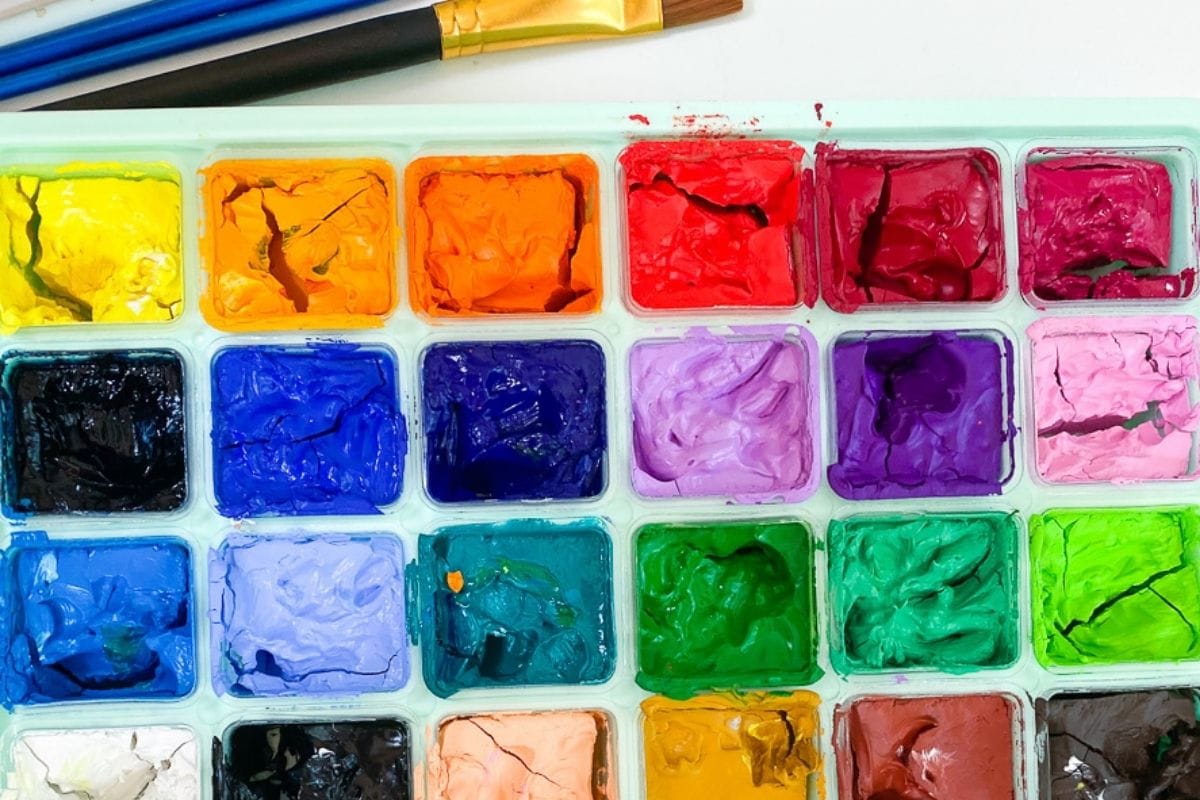
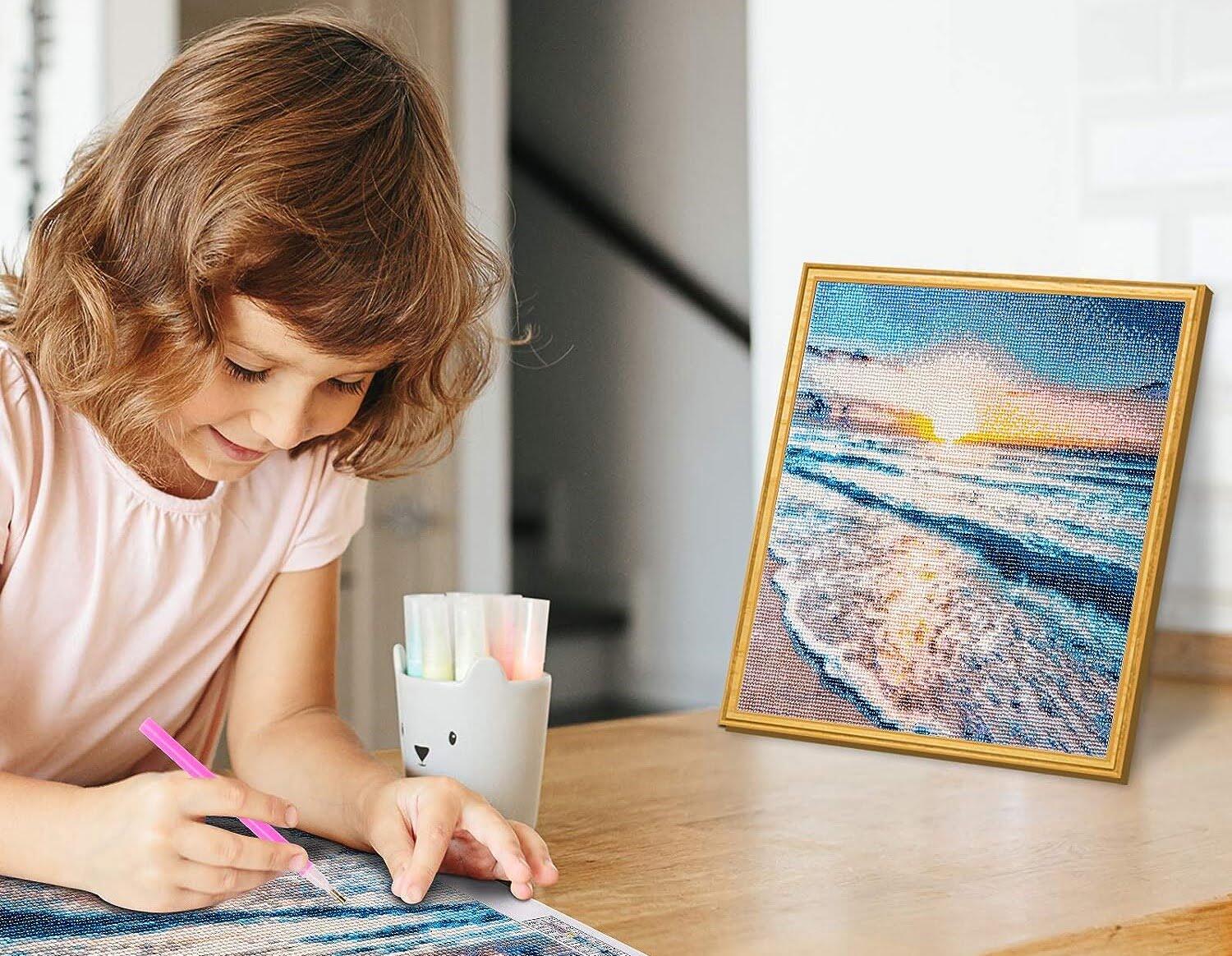
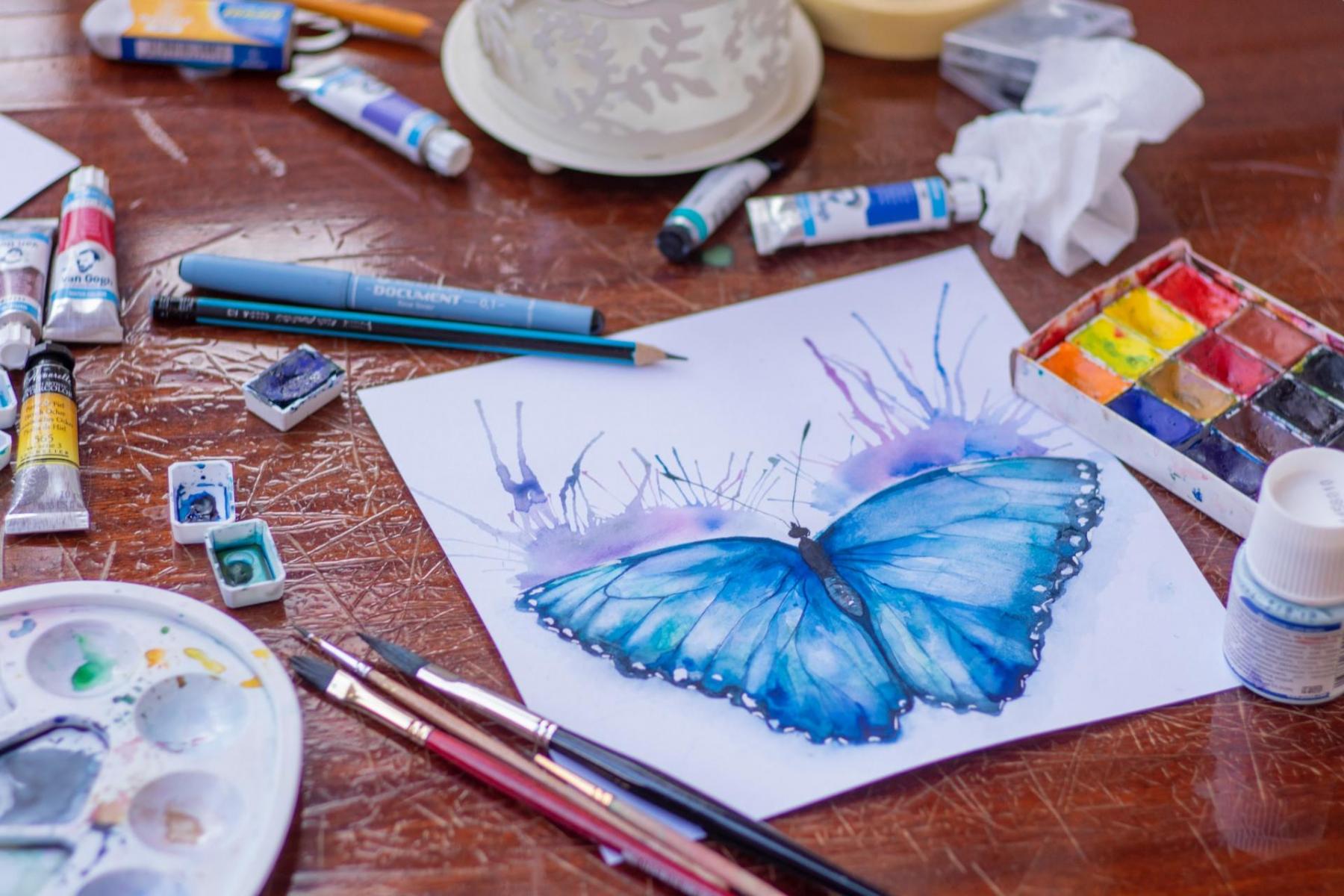
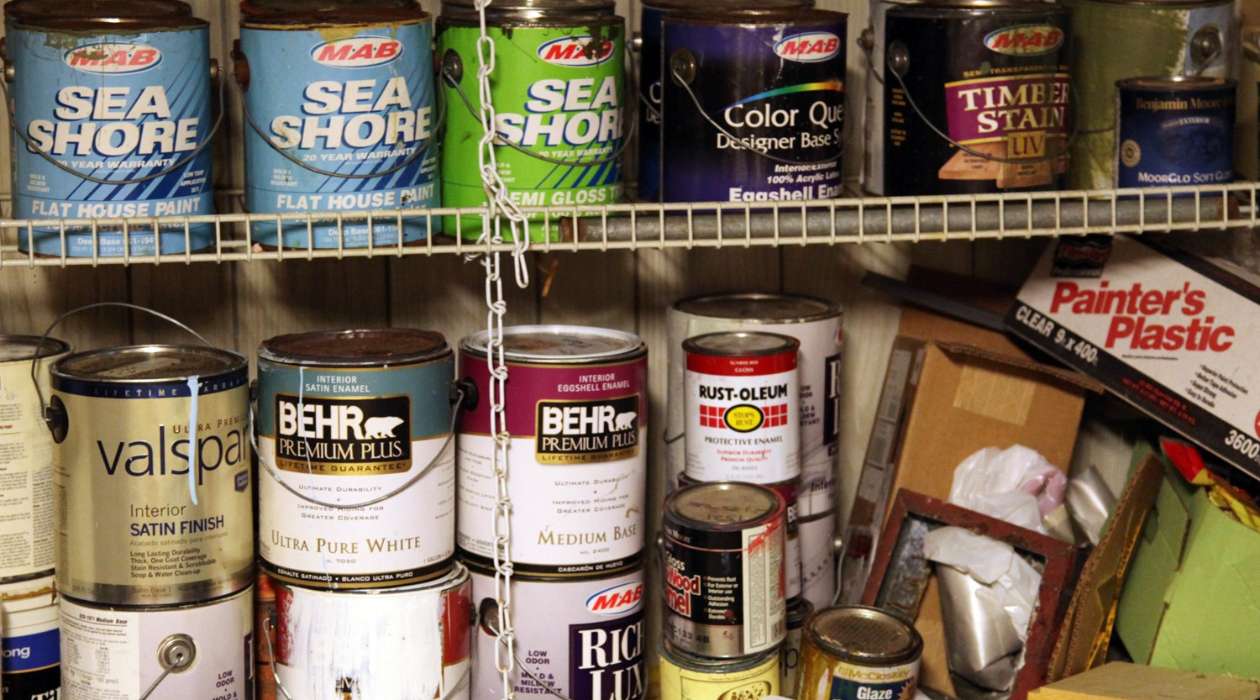
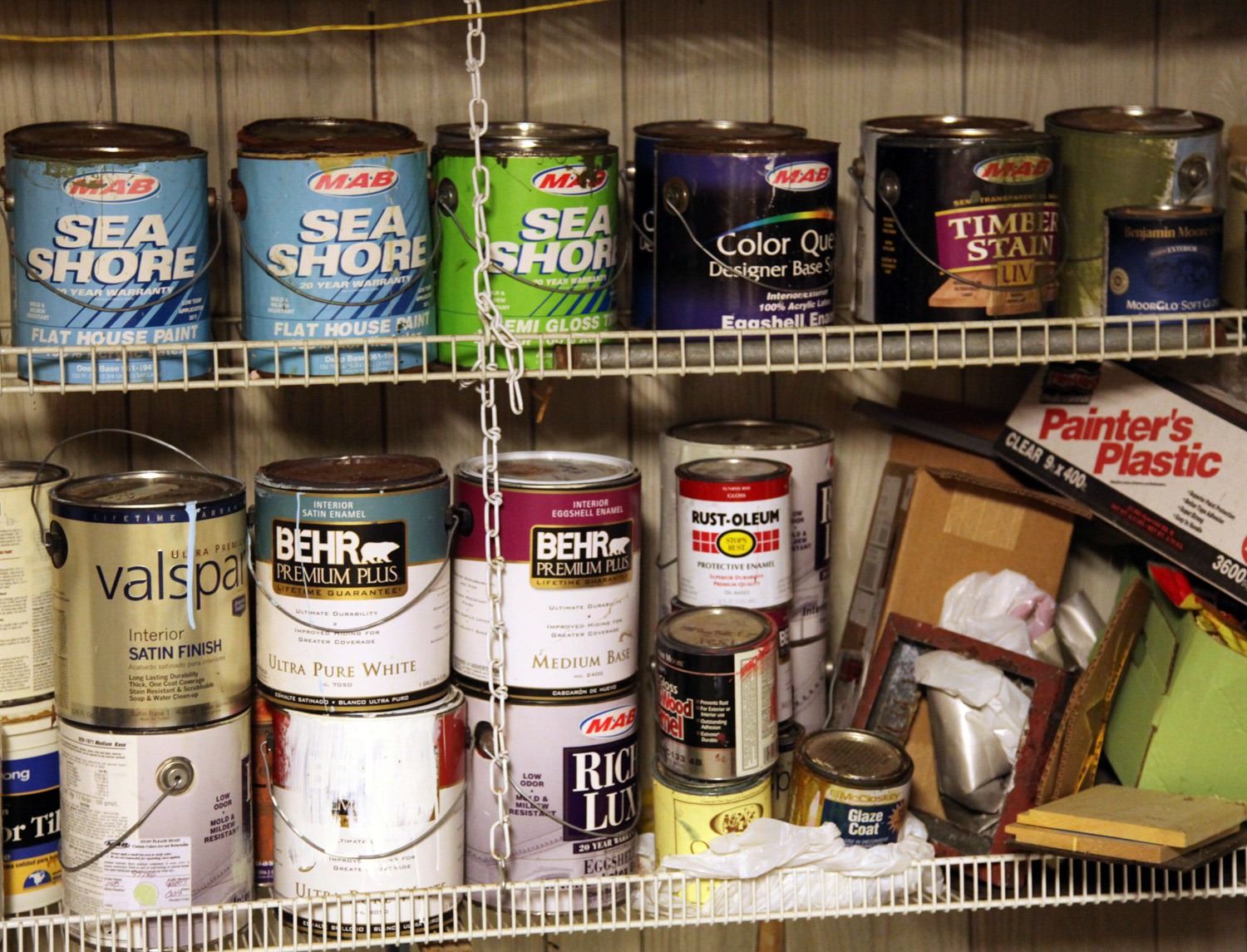
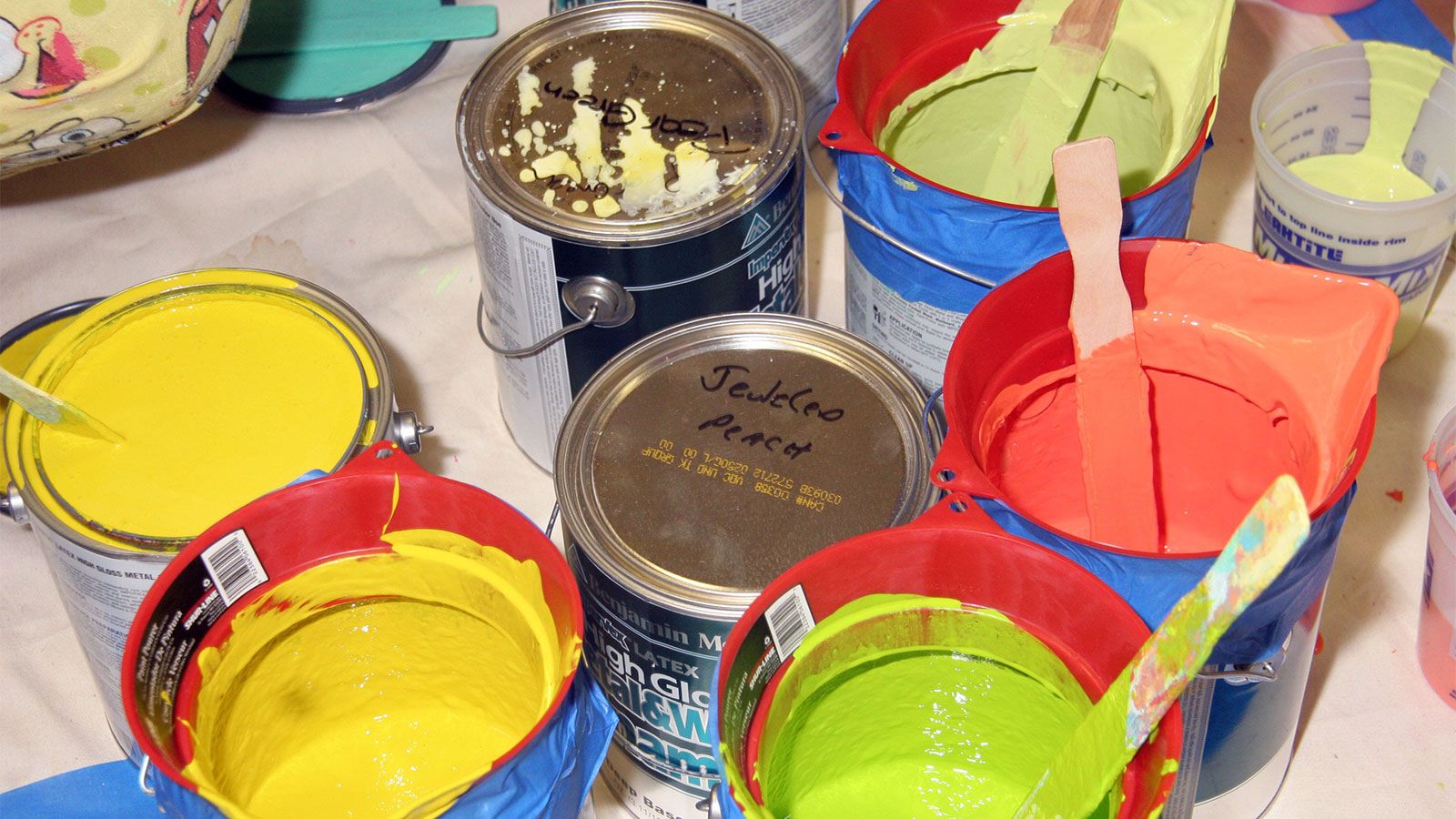

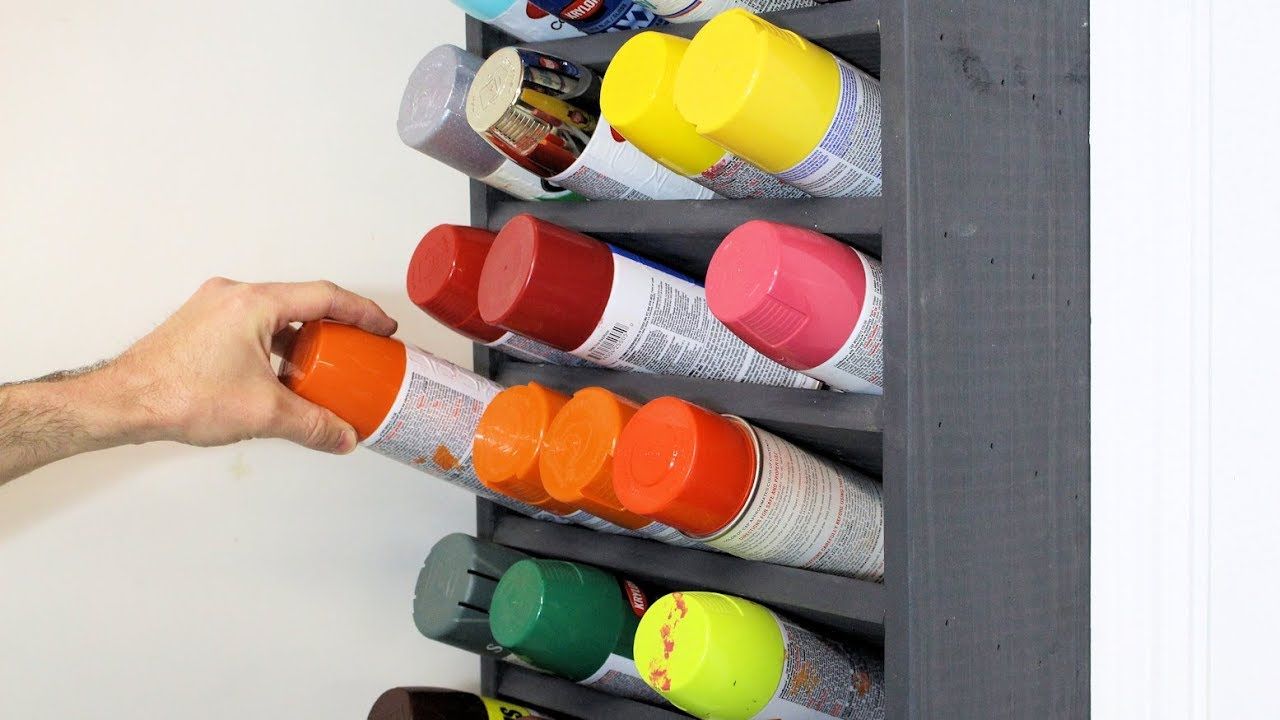


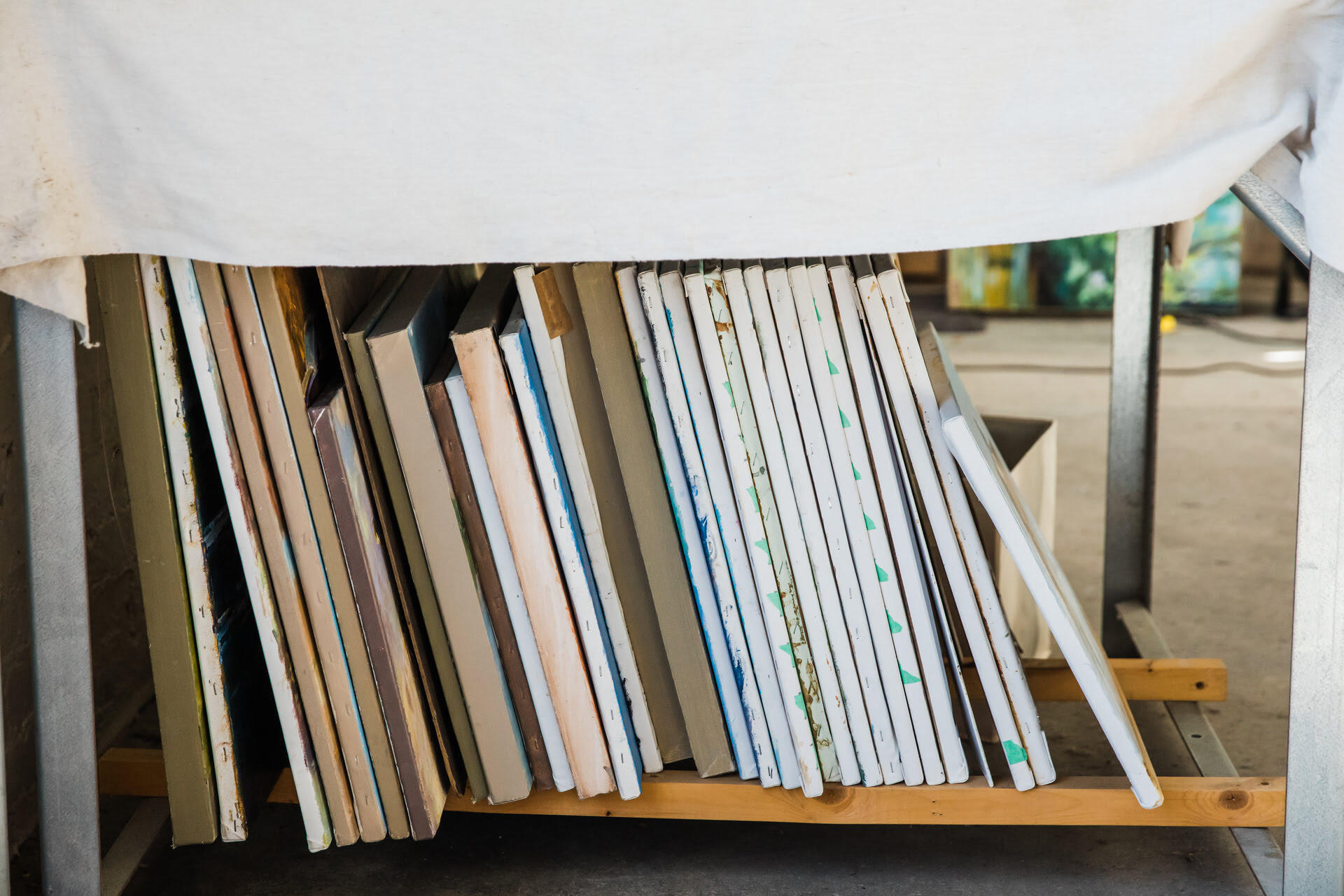
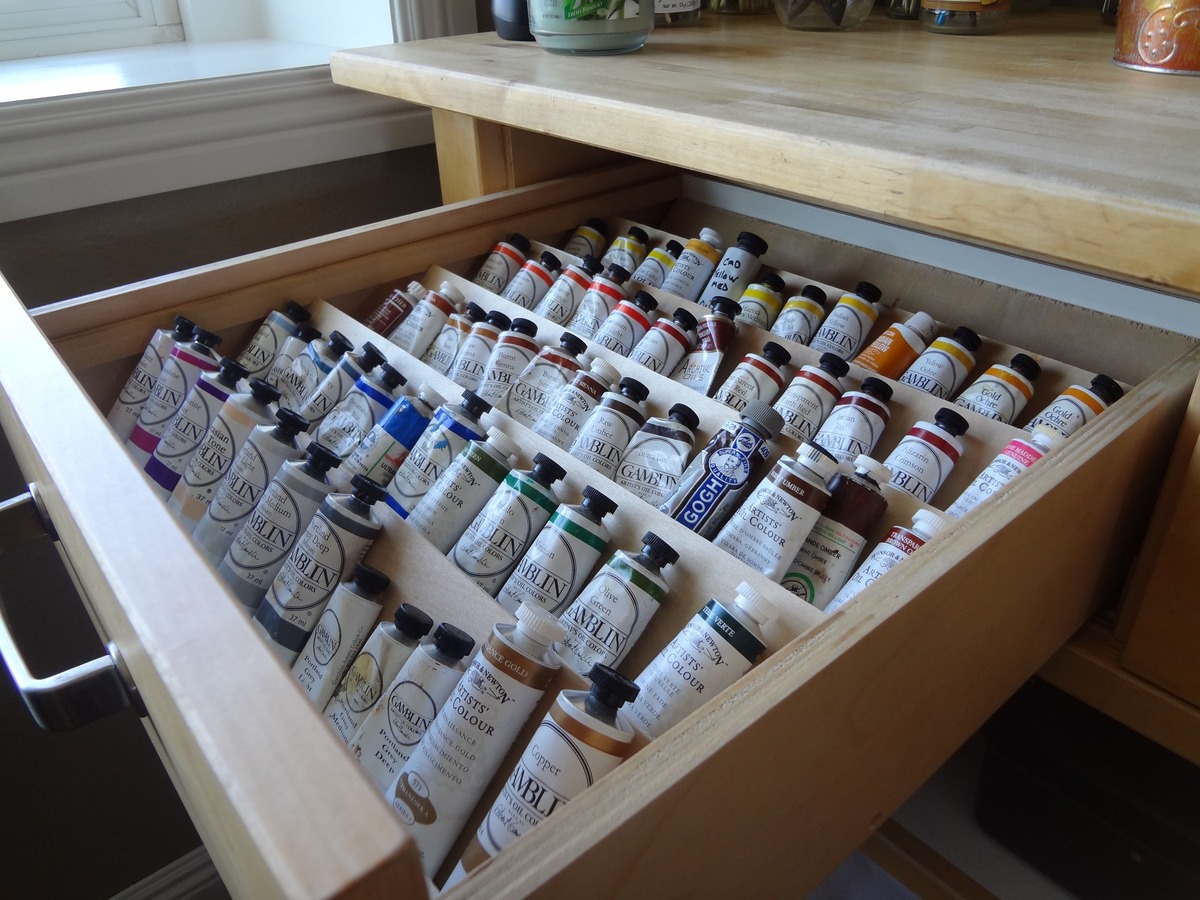
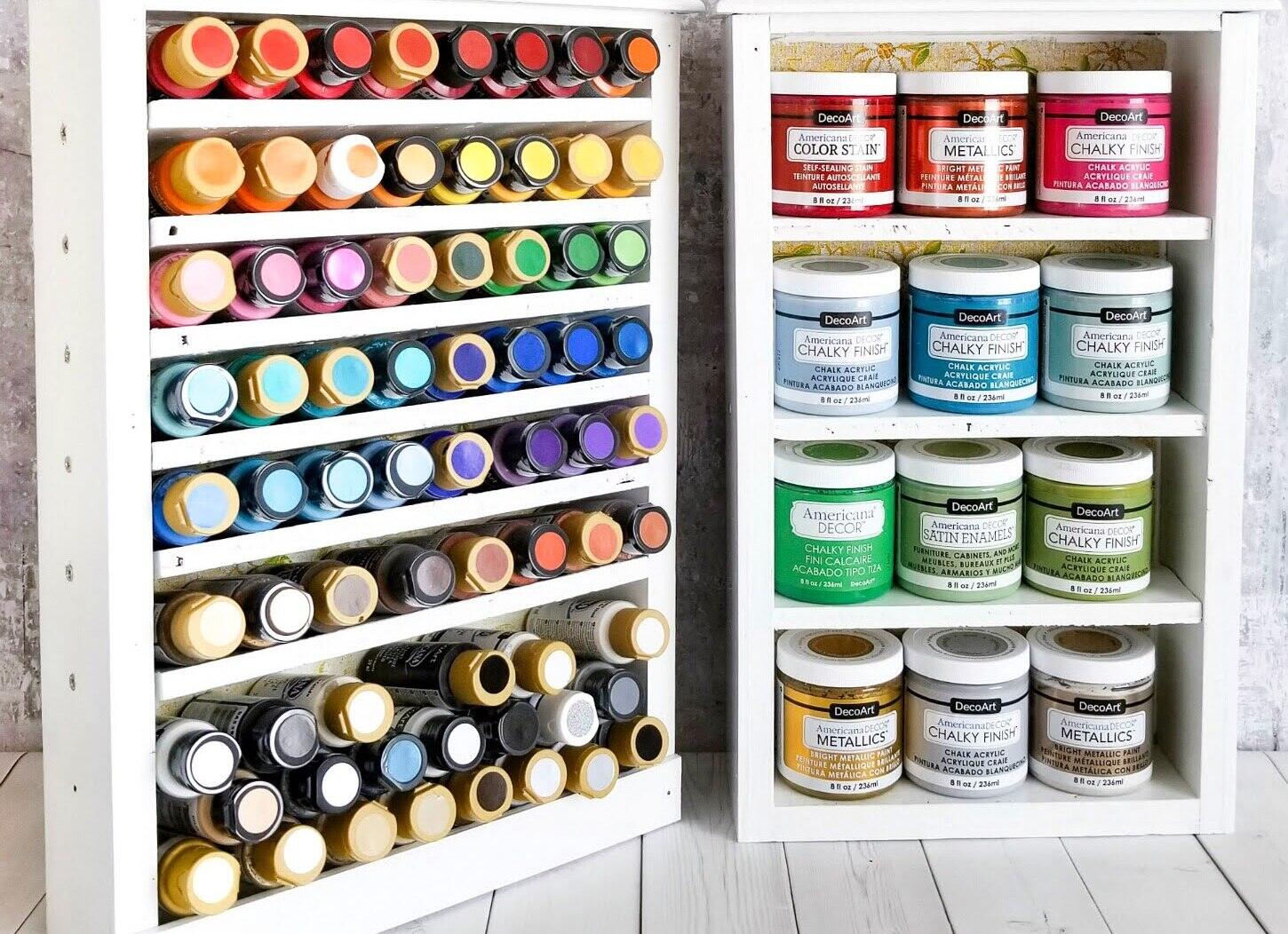

0 thoughts on “How To Store Paintings”